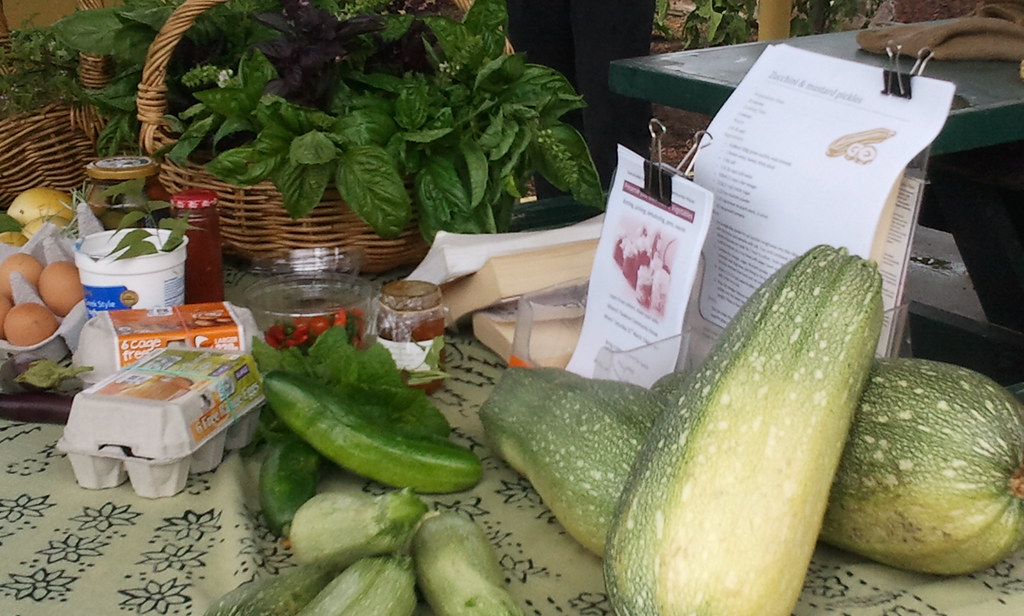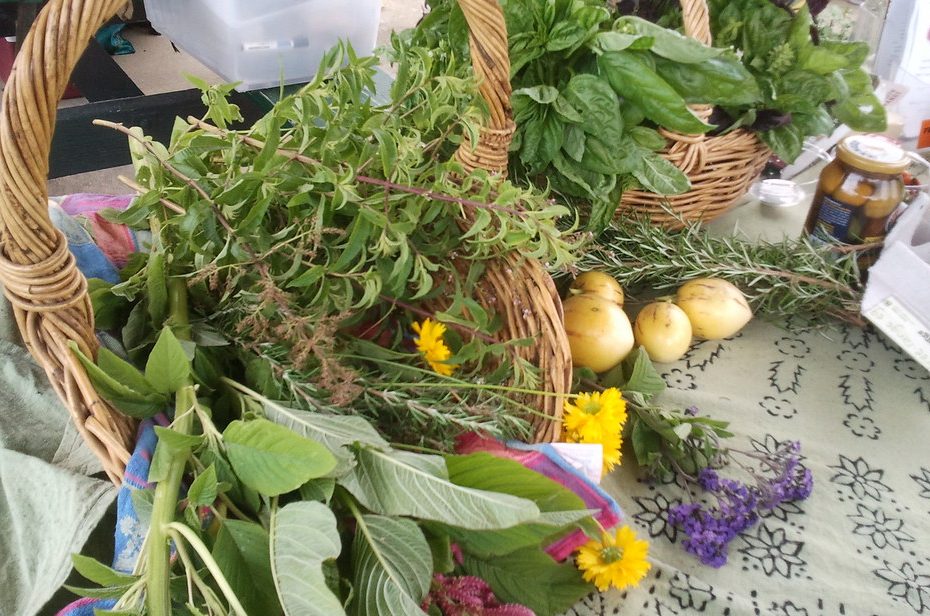Using herbs in your cooking is one of the simplest ways to add some strong flavors or an additional twist. But sometimes it can be confusing whether the herb you are adding is in fact an herb or a vegetable or both. So, I did some research to figure out: are herbs vegetables?
Herbs are generally considered a subset of vegetables with strong flavors that are used in moderation. Thus, the distinction between herbs and vegetables is a linguistic rather than a botanical one.
I realize that this explanation actually evokes more questions than it answers so let me elaborate a bit. Below you’ll find a more detailed explanation of the differences between herbs and vegetables and why most could be considered either. I’ll also go over the various food groups that herbs belong to. Let’s dig in!
Are herbs vegetables?
The difference between herbs and vegetables lies in their use since there is no botanical distinction between the two. Herbs are generally used in moderation while vegetables tend to make up the bulk of a meal.
In this sense, anything that is derived from a plant can be considered a vegetable such as the flavorful leaves of common herbs such as basil or coriander. In theory, you could distinguish further between herbs, spices, root vegetables, nightshades, leafy greens, etc. without much scientific merit.
In short: what determines the vegetableness of a herb is the way we use it in language and cooking. Let’s look at some examples to illustrate this point.
What is the difference between a vegetable and an herb?
The main difference between a vegetable and a herb is the way in which each is used in cooking: vegetables are often used in large quantities and make up the bulk volume or mass of a meal while herbs are used to fine-tune the flavor.
Think of some common herbs like rosemary and then think of a common vegetable like cucumber. You probably wouldn’t think of chowing down on a bowl of fresh rosemary because the flavor is just way too intense to consume it pure. Likewise, using tiny cucumber bits to add flavor to a meal is just about as pointless.

Here’s a non-exhaustive table of different herbs and vegetables which may help discern the differences a bit better:
| Vegetables | Herbs |
| Broccoli | Arugula |
| Cabbage | Basil |
| Cantaloupe | Chammomile |
| Cauliflower | Chives |
| Cucumber | Cilantro |
| Eggplant | Dill |
| Kale | Fennel |
| Kohlrabi | Lavender |
| Lettuce | Lemon Balm |
| Pepper | Lemon Grass |
| Pumpkin | Marjoram |
| Rhubarb | Mint |
| Squash | Oregano |
| Strawberry | Parsley |
| Sweet Potato | Rosemary |
| Tomato | Sage |
| Watermelon | Stevia |
| Tarragon | |
| Thyme |
Probably you would not have questioned if broccoli was a vegetable or if oregano was a herb but with some other plants, the difference is less obvious.
Famous herbs that can also be used as vegetables include dill or basil. Dill features prominently in several Indian dishes as one of the main ingredients and is even used in many potato salads as a common vegetable. Likewise, basil frequently forms the basis of green pesto much like a vegetable would.
There are also wolves in sheep’s clothing on the other side of the aisle such as fennel or onions. I’ll discuss these two in more detail in a later section.
What food group are herbs in?
In a culinary sense, herbs are part of the plant food group which includes all plant-derived produce such as vegetables, fruits, and herbs. Herbs can be broadly classified as plant foods with extraordinary flavorful leaves. This, however, then blurs the lines between herbs and other leafy greens such as lettuce and spinach.
In a botanical sense, herbs are part of the botanical category of herbaceous plants which simply refers to a group of plants that grow stems with leaves and typically do not survive winter. Unfortunately, this category also includes many other plants which we would usually not consider to be herbs.
It turns out once again that scientific reality appears to be more complex that what we’d like it to be. Herbs is a colloquial term we use to describe the use of different types of plants in cooking. The only feature all herbs have in common is that their leaves are flavorful.
Which vegetables are herbs?
Vegetables that could be considered herbs are celery, onions, and fennel. However, it is not that these veggies possess some form of innate herbiness but rather that they are frequently used like herbs.
Let’s go over these one by one to see why these vegetables are frequently classified as herbs:
- Celery: This wanna-be-veggie not only has a strong taste but is also mostly used in moderation to add a bitter twist to otherwise delicious dishes (sorry, celery-lovers!). Botanically speaking, celery (Apium graveolens) is a herbaceous plant of the parsley family (Apiaceae). This plant family also includes other familiar herbs such as parsley (duh!), dill, and coriander.
- Fennel: Part of the same parsley family group is fennel which most of us would likely consider more on the veggie side of things. Furthermore, it is frequently used in larger quantities in soups and stirs. However, from a botanical point of view, it could be classified as a herb (or at least it enjoys the company of many plants we tend to call herbs).
- Onions: Onions are a curious case since they actually fall in both and neither category at the same time. While we would probably think of onions mostly as a vegetable (especially since we don’t use the onion leaves in cooking) there is little doubt that we would not enjoy eating a bowl of raw onions. Onions are used more like herbs in that they serve to add flavor and spice to the main dish.
Of course, there are many other vegetables that could be considered herbs and viceversa but as we have established the difference is mostly one of perception and use.
Conclusion
To say the difference between herbs and vegetables is blurry is quite an understatement. In fact, the main point of the confusion stems from the fact that herbs and vegetables are not technical botanical terms which makes classification solely dependent on human perception and use.
Herbs could even be considered vegetables in some parts of the world and not in others depending on their use in local cuisine.
In the end, whether some herbs are in fact vegetables and the other around is a fairly moot discussion. Choose the one you like, add it to your meal in the quantity you enjoy and let’s move on with our lives!
“Herbs and flowers – Sustainable Fawkner Food Produce Swap” by John Englart (Takver) is licensed under CC BY-SA 2.0
“Oversized Zuchini – Sustainable Fawkner Food Produce Swap” by John Englart (Takver) is licensed under CC BY-SA 2.0
- Are Herbs Perennial? - January 29, 2021
- Can Herbs Survive Winter? - January 28, 2021
- Can Dogs Eat Herbs? - January 27, 2021
